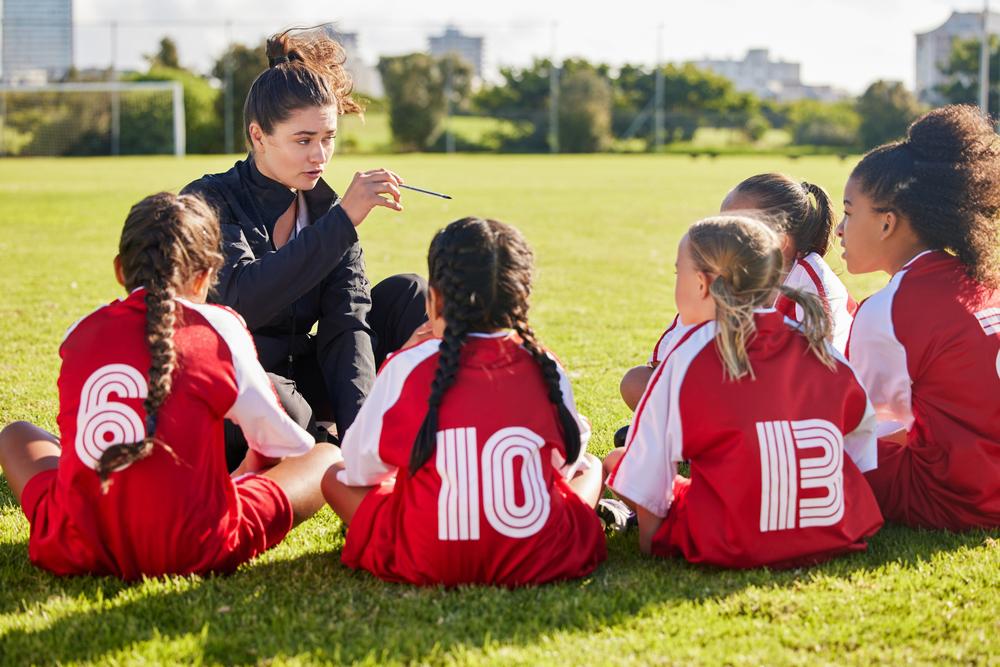 Change is inevitable, but it’s also scary. Whether you get promoted to team leader or cut from the starting lineup, your brain is programmed to produce stress. However, it’s possible to become more skilled at dealing with change by building your resilience muscles.
Change is inevitable, but it’s also scary. Whether you get promoted to team leader or cut from the starting lineup, your brain is programmed to produce stress. However, it’s possible to become more skilled at dealing with change by building your resilience muscles.
Here, board-certified family physician and TrueSport Expert, Deborah Gilboa, MD, is explaining exactly what happens to the brain when it senses a change, and how athletes can best recover and rebound from any type of change.
How your brain operates with change
“Your brain wants to keep you safe, and any change presents a challenge to that,” says Gilboa. “Our brains have over a million functions but only one job. That job is to keep us alive. In the status quo—the situation we’re in right now—we are currently alive. So, any disruption to that causes our brains to see that change as a threat. It’s a safety mechanism, but it often works against us.”
Essentially, that means any disruption to your practice schedule or a coach calling a surprise team meeting can cause your heart to race, your palms to sweat, and your thoughts to spiral. Even the threat of change before it happens can make your brain start to stress. This doesn’t mean you have a problem with anxiety, says Gilboa. It’s just your brain doing what it was designed to do.
How good change can cause stress
You make the varsity team after a hard summer spent training and preparing. It’s an exciting moment, right? Yes, but as Gilboa explains, it can also be stressful and anxiety-producing because it is still a change, especially if you haven’t been on a team at this level before. “You likely feel proud, excited, happy, and relieved, but at the same time, your brain may also be turning over questions like: ‘Is there anybody on this team who doesn’t like me? Am I really good enough for this team? Is this coach going to like me?'”
This discomfort doesn’t mean you should quit the team. It’s just your brain’s way of trying to protect the status quo, to keep you from change. It’s trying to keep you safe—but it can also keep you stuck if you listen to it. That’s why you need to become aware of how your brain responds to change and help it shift the narrative.
How to become more self-aware
First, tune into those thoughts when they happen. Gilboa explains that the more often we can catch our brain in this stressed-out state, the easier it is to identify the fact that your brain is simply trying to protect you from any change. If you don’t start becoming aware of it, you’re more likely to end up agreeing with those stress-filled thoughts about whether you should quit the team or tell the coach that you’re not ready to be the team leader this season.
Recognizing that your brain is just trying to keep you safe but isn’t necessarily correct or accurate in its assessment of the situation, can help you move through the change and—especially in the case of positive change—actually enjoy the moment.
How to shift from fear to thinking
Gilboa’s number one tip for dealing with a stressful thought spiral in the moment is simple: Ask yourself a ‘thinking question.’ It can be about the problem you’re facing, or you can even ask yourself something unrelated, like what you should have for dinner tonight.
The question itself doesn’t matter, Gilboa explains. The question just activates a different part of the brain, so the stressed part of your brain settles down. Asking a question shifts your brain chemistry, and once that happens, you’re able to think more clearly and focus on recovery.
How to develop more resilience
 “All change is stressful, but not all change or stress is bad,” says Gilboa. Stress, in reasonable doses, actually helps your brain grow and develop resilience, or the ability to successfully navigate something. The good news is that the more often you confront change and work your way through it, the better you (and your brain) become at handling change.
“All change is stressful, but not all change or stress is bad,” says Gilboa. Stress, in reasonable doses, actually helps your brain grow and develop resilience, or the ability to successfully navigate something. The good news is that the more often you confront change and work your way through it, the better you (and your brain) become at handling change.
Gilboa likens your brain’s resilience to your body’s resilience. For example, a student who just joined the cross-country team may feel sore after even a mile of slow jogging. But by the end of the season, they likely can go a lot further with a lot less stress on their body. Similarly, the more change you face, the better your brain becomes at dealing with it.
How to make time for mental recovery
Moving on from change helps your resilience muscle get stronger, but you need recovery time to make that growth happen. Gilboa explains that this can look similar to physical recovery, meaning you can take days for your brain to rest alongside your body. Instead of spending your rest day pouring over homework or working an extra shift, it can be helpful to at least take part of the day for pure mental relaxation. Gilboa notes that mental recovery can also look like sleeping in or taking a nap.
How to come back to routines and rituals
Our brains love the status quo, which means our brains love when we stick to certain schedules, routines, and rituals throughout our day. Routines make us feel more relaxed and settled, so when changes are happening in our lives, it’s important to keep as much routine in place as possible, Gilboa says.
Routines around meals and bedtime are usually the easiest to keep in place, despite change. Even if you’ve moved to a new house, you can still have the same snack and 15 minutes of reading before bed.
How to not get stressed about stress
Finally, while it’s important to be self-aware of stress patterns brought on by change, it’s also important to prevent yourself from stressing about your stress.
“Not every change requires you to take an entire day to process it, because frankly, every day there’s going to be some kind of change in your life,” says Gilboa. And ideally, small changes won’t cause as much stress because you’re developing resilience. Pay attention to your thoughts and feelings, but don’t push yourself to dig into them if things are feeling fine.
___________________________
Takeaway
Change is inevitable, and recovering from any change, even a positive one, can be hard. To recover better and build resilience, focus on shifting from fear to logic, taking mental rest days, and maintaining routines.



